How to learn software development
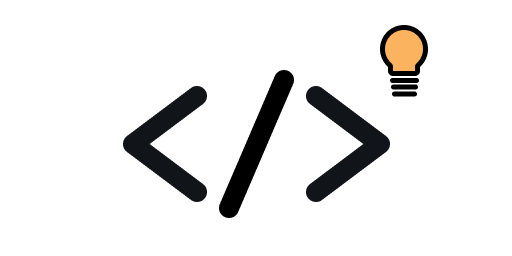
Intro
The world of software development can seem like a never ending mountain of skills to learn. As soon as you feel like you're reaching a peak another starts forming on the horizon. In many ways this is part of the appeal for a logical thinker who enjoys the journey of learning, however it can understandably be overwhelming for a newcomer trying to get started.
This post contains practical advice targeted at beginners who are interested in getting started in the world of software development especially for those coming from outside of computer science as I did from mathematics. It's true that job interviews suck and imposter syndrome is real but perseverance in the industry is rewarded with a unique feeling of satisfaction.
Learn a language
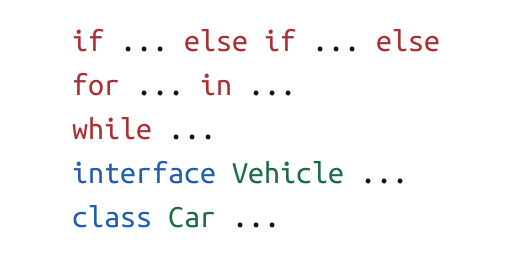
First step is to learn the basics of a programming language.
This could be any of the popular general purpose programming languages such as Python, Java, C#, JavaScript (TypeScript), Go. Incremental features have been added to the older languages that have survived the test of time and have become more modern and pleasant.
Over the course of many years it's likely that you'll end up picking up extra languages for various reasons: forced to for new job, trying a new personal project, writing automation scripts. The recurring theme is to focus on the fundamentals which in this case means support for functions, classes/interfaces/objects, if/else statements, for/while loops, static types, generics. Language specific expertise can come over time such as how garbage collection or advanced concurrency works. The importance of static types when it comes to real software projects cannot be overlooked which means for dynamically typed languages you should learn how to use the optional static typing features such as type hints in Python or TypeScript over JavaScript.
The official language docs are often sufficient starting points for a complete beginner to get up and running:
Algorithms
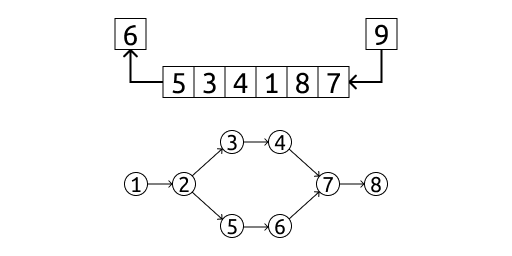
The first reusable building blocks for solving problems with code are algorithms and data structures. Although uncommon to need to implement these from scratch in the real world, it's important to have a solid understanding of them to have a strong foundation and intuition for how to approach new problems in a methodical manner.
All languages provide standard implementations of them for example a
dynamic array which shows up
explicitly in Java as ArrayList<> or under the hood in Python as its list
type. Knowing how the standard tools in the toolkit work will help to recognise
which to apply and why to any new situation that comes up.
A non-comprehensive list of common data structures and algorithms I recommend being comfortable with:
- Arrays
- Linked lists
- Stacks and queues
- Binary search trees
- Heaps and priority queues
- Hash tables
- Binary search
- Depth first search (DFS) and breadth first search (BFS)
- Dijkstra's algorithm
- Quicksort, merge sort, insertion sort
- Topological sort
- Union find
The best way to study is a combination of resources of which there are plenty available online. Just like learning a non-programming language requires speaking, listening, reading and writing practice, the most effective way to learn algorithms is a mix of theory and practical coding to reinforce understanding.
Below are some of the resources I have personally found useful:
Introduction to Algorithms (https://mitpress.mit.edu/9780262046305/introduction-to-algorithms/)
Also known as CLRS after its authors (Cormen, Leiserson, Rivest, Stein), this book is well known and deserves its reputation. It's comprehensive and will be easy to follow for those accustomed to formal proof of theorems for example from mathematics. Depending on your interest more or less can be read but it is useful to get the proper theoretical background on how algorithms work, why they work and how fast they work (big O notation).
HackerRank (https://www.hackerrank.com/)
Interactive coding platform containing a wide range of easy introductory problems (as well as harder competitive programming style problems) useful for familiarizing with language syntax and implementing common algorithms.
Leetcode (https://leetcode.com/)
Another interactive coding platform with a wide range of short algorithmic problems often associated with spreading the algorithm job interview culture. It is not worth spending over an hour stuck on a single problem in most cases - there are always more to solve with the same pattern. If after reading the solutions the problem is still too difficult you may benefit from going back to studying theory. Most importantly stay positive as ultimately this does not directly reflect software development and boils down to pattern matching.
Developer tools
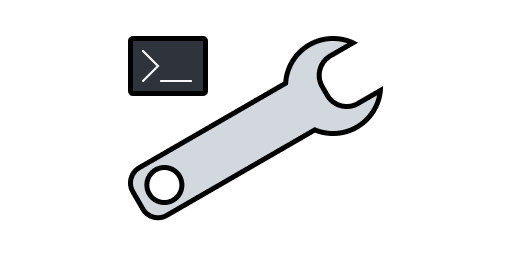
As you work on larger projects you'll need good developer tools to maintain velocity, collaborate with others and deploy to production. A working level of proficiency is expected in many of these core tools across the industry. Although the technology world moves quickly, the categories of these tools changes less often so learning how to use at least one of each type will help transfer to others in the future.
Each of these deserve their own dedicated guide and require significant time investment to truly be called an expert but working level proficiency can be achieved in relatively shorter time. Start off gradually with a basic awareness of what these tools are and learn them as you need them. A brief overview of what tools to look into is given below.
Operating system and shell
Production servers overwhelming run Linux due to its stability, security and being free and open source software (FOSS). Many other projects and developer tools work best or only work on Unix-like operating systems. Therefore, my recommendation is to use Linux or macOS for your developer machine, or Linux on Windows through Windows Subsystem for Linux (WSL) while developing. Ubuntu is a popular Linux distribution to start with. Exceptions exist for platform specific development such as Windows for the C# ecosystem with .NET and Visual Studio and macOS for the Apple ecosystem with Swift.
To interact with your operating system you will spend a lot of time using the terminal with a shell such as Bash which is the default in many Linux distributions including Ubuntu. On your local development machine you will also have access to a user interface for example for the file system, Git and Docker. However you will commonly need to work on remote servers via SSH to debug production applications or as a cloud development workspace. Comfort with using Linux and the terminal to perform your everyday tasks will make it easier to transition to working with remote servers.
Here is a list of command line programs I frequently use:
- File system navigation -
ls,cd,pwd,tree,mkdir,rm,touch - File system search -
grep,find,which,env - File and string manipulation -
vim,cat,echo,head,tail,cut,sed,jq - File compression -
zip,unzip,tar - Network requests -
curl,wget,openssl - Resource management -
top,ps,kill,free - Other -
tmux,ssh,git,docker
It is convention to store shell and program user settings in dotfiles in the
user home directory for example ~/.bashrc and ~/.gitconfig. Eventually you
may version these in your own dotfiles repository
to make it easier to bootstrap any new development machine or remote cloud
workspace with your preferences.
Integrated developer environment (IDE)
To write, run, test and debug code an integrated developer environment (IDE) is
used. While this can technically be done solely in the terminal with a program
like vim with considerable customisation there's often a more popular choice
for the specific language or target device.
For a lightweight easy to use code editor VSCode is a good option with strong built in support for TypeScript and its rich ecosystem of extensions allows it to be transformed into an IDE for any language.
For a more heavyweight feature rich out of the box IDE consider Visual Studio, IntelliJ IDEA, PyCharm, GoLand depending on your language.
Version control system (VCS)
Source code must be managed well to handle the complexity of developers collaborating on features and bug fixes asynchronously in their own independent environments. The most popular version control system (VCS) for this is Git and the most popular remote repository hosting service is GitHub.
Given the universal adoption of Git, IDEs provide deep integration with it which
can be helpful but you should be familiar with operating with git from the
terminal as well.
Common workflows with Git include:
- Creating and cloning a Git repository -
git init,git clone - Committing and pushing a Git repository -
git add,git status,git commit,git push - Setting up Git branches and fetching new upstream changes -
git branch,git checkout,git fetch,git pull,git remote - Merging and rebasing Git branches including resolving merge conflicts -
git merge,git rebase - Managing multiple development branches -
git worktree
Continuous integration and deployment (CI/CD)
For a software project to keep high velocity it's critical that the main branch always builds successfully and is deployed often for rapid iteration. This involves tasks such as installing dependencies, compiling, linting, testing, building and publishing artifacts against pushed commits and tags. Rather than have a developer manually perform these steps this is automated in a continuous integration and deployment (CI/CD) pipeline.
There exist multiple providers but GitHub Actions is an obvious choice to start with if your Git repositories are already hosted on GitHub.
Build system
During both CI/CD and local development the dependency graph between project tasks becomes difficult to manage manually. For example, if a line of source code is changed in a subproject you need to know in order to rerun tests the relevant source code and its dependencies must be recompiled otherwise the test results will be stale. We could just recompile all code in the project but that becomes slow and inefficient for large monorepo style projects. Furthermore, if the inputs haven't changed the results can be cached and reused across independent CI runs saving lots of time.
The need for efficient and correct builds leads to using a build system. Examples include Bazel, Gradle, Ant, Make and Turbo. Each language ecosystem may have build systems specifically designed for them. Bazel is a solid language and platform agnostic build system to choose.
Cloud
Production applications need to run on servers somewhere. Historically that meant renting dedicated machines in data centres but today the default option is using virtual machines (VMs) in the cloud. This enables low cost commodity hardware resources to be shared securely between multiple customers and scaled elastically depending on demand.
Possibilities include managing the VMs on the cloud and deploying to the VMs yourself as Infrastructure as a Service (IaaS) or providing application code in the form of containers or otherwise to be managed and run on the cloud directly as Platform as a Service (PaaS).
The main players are Amazon Web Services (AWS), Google Cloud Platform (GCP) and Microsoft Azure. Each platform offers some quota of services under a free tier to get started and it's best to start off with just one of them to benefit from the whole integrated platform.
Containers
Running software in different environments is hard. Even between developers on a single team with the same model hardware it's frequent to hear the saying "it works on my machine!". Containers exist to solve this problem by packaging an application together with its dependencies to run in a reproducible environment. The overhead is less compared to VMs due to the host operating system kernel being shared across containers.
There exist standard specifications for containers by the Open Container
Initiative (OCI). Docker heavily contributed to the
OCI and is the default platform for developers to build OCI compliant images and
run containers. To run containers in production an orchestration system such as
Kubernetes (k8s) is used which under the hood can use
different container runtimes including containerd which was originally split
out from Docker during attempts to make it more modular.
Common workflows with the Docker CLI include:
- Building an image from a Dockerfile -
docker build - Running a container from an image in a registry -
docker run - Attaching to a running container and inspecting logs -
docker ps,docker exec,docker logs - Stopping and removing containers -
docker stop,docker rm - Managing locally pulled images -
docker pull,docker images
Design
Design tools can be used to mock user interfaces and information architecture of applications and a company may have Product Designers for this purpose. They are still valuable for developers to create architecture diagrams as an important step in the software development lifecycle to plan implementation and gather feedback from teams.
Figma is the best full featured collaborative design platform today. The images in this blog were all created in Figma! Other lightweight options to experiment with are Excalidraw and draw.io.
Projects
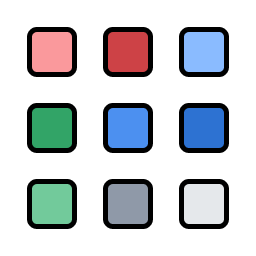
Software development is creative! The joy is in the huge variety of projects that can be worked on.
Find your passion. If you enjoy algorithms you might continue studying theory and join competitive programming contests. If you enjoy user facing applications you might try to build and deploy an app to help others. If you enjoy AI/ML you might try to train your own model for a bespoke task.
This is highly personal and dependent on your own interest but some ideas if you're struggling:
- Script to automate task you find yourself repeating
- Command line interface (CLI) to interact with an external service from the terminal
- Web/mobile/desktop application
- Personal website/blog
- Large language models (LLMs) applied to a new area of interest
- Simple database implementation from scratch
- Small bug fixes in open source projects
Don't worry about how large or small a project is, the biggest challenge is getting started.
As well as exploring your own projects, I recommend spending lots and lots of time reading other codebases. This will help as inspiration for your own projects, teach you new programming tricks and open your mind to various styles of writing code. You will eventually form your own opinions and code style after years of reading and writing code. Try to start from a user facing string in a piece of software you use and reverse engineer how the system works from searching the source code. Doing this improves your debugging skills and decreases the time it will take you to onboard onto a new codebase in the future.
Use this as an opportunity to put into practice the developer tools you've learned at a small enough scale that you can see the whole picture. At larger companies there may be abstractions on top of tools or internally developed substitutes for them to streamline processes and enforce consistency which increase developer productivity but also make it easy to skip understanding the fundamentals behind them. For example, set up your own CI/CD pipeline for your code repository from scratch which will save you time in the long run and teach yourself valuable skills.
Below are some extra thoughts and resources:
Contributing to open source
Giving back to the developer community can be one of the most rewarding ways to spend time and a lot of the code we rely on depends on the hard work of the people working on open source projects. A word of warning though that, especially as a beginner, it is not realistic to contribute to the largest open source projects without a considerable time investment on all sides. In fact, some maintainers may take the stance that no external contributions are accepted to avoid the potential discouraging experience for everyone.
If going down this route, it's best to focus on small less controversial changes such as documentation and small bug fixes while demonstrating good communication and commitment which may grow into a longer term relationship of trust. Look for smaller open source projects which may have more bandwidth and a shortage of contributors. A personal motivation behind a contribution may also improve your chances of keeping morale up for example if it would allow you to remove a workaround in your own application code.
Clean Code (https://www.oreilly.com/library/view/clean-code-a/9780136083238/)
A well liked book for teaching guidelines to follow when writing code including don't repeat yourself (DRY) and keep it simple stupid (KISS). Worth reading early on to form intuition on what good or bad code may look like and why. As with most advice, it's important to be open minded and not treat it as rules set in stone that can never be broken - exceptions always exist.
Design Patterns (https://www.oreilly.com/library/view/design-patterns-elements/0201633612/)
Also known as the "Gang of Four" design patterns book which prescribes and gives names to object oriented programming solutions for repeatedly seen software problems. This book requires some experience in writing object oriented programming, however it is likely that while reading any established codebase you will spot at least one of the design patterns inside. Similar to how algorithms share knowledge of building blocks of code, design patterns share knowledge of building blocks of objects.
Conclusion
The best advice I can give is to stay curious and keep writing code. We all look back at early code we have written and laugh or feel embarrassed but writing code that serves a purpose to people and enjoying the journey along the way is what matters. At a certain point the pieces will start to click together and you'll look behind at the mountain you've climbed and look forward to the next one ahead.
I hope that this has been useful as it would have been for me at the start of my career! If you have any questions you are welcome to reach out.